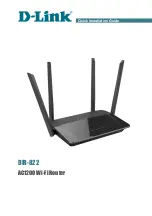
23 February 2004
PVS3000 & PVS 3500 Installation Guide
3
Before getting started
This installation guide provides step-by-step instructions for installing the PVS3000
and PVS3500 Media Platforms using factory default settings. After installing the
Profile XP Media Platform using this installation guide, you can refer to the Profile
XP System Guide to customize system settings for your installation.
For Grass Valley Customer Support information, refer to page 47 of this Installation
Guide.
About channels and factory default configuration
Profile applications use channels to control disk recording and playback. A channel
defines a grouping of Profile XP video, audio, and timecode resources and is
identified by a unique name. Profile XP software supports three channel types:
Recorder channel, Player channel, or Player/Recorder channel. For more information
on channel types and creating or modifying channels, refer the Profile XP System
Guide.
Your Profile XP Media Platform is shipped with default Recorder and Player
channels. These default channels are named Vtr1, Vtr2, Vtr3 and so on. The following
table describes the video and audio connections you’ll make for the two channel
types. On the pages that follow, you’ll find specifics about the type and number of
default channels in your system, and their video and audio I/O connections.
Rack-mounting the Profile XP Media Platform Chassis
This procedure assumes you have already rack-mounted the PVS3000 or PVS3500,
PFC500, PFR500, PFR600, or PFR700 Fibre Channel RAID Chassis, I/O Panel, and
audio interface option as required. For rack-mounting information, see Appendix C,
“Rack Mounting Information and Rear Panel Drawings” in the Profile XP System
Guide.
Default
channel
type
Video I/O
connections
Audio connections
a
a.
The number of audio I/Os is determined by your PVS3000 Series model and the number of
Audio boards installed.
Timecode I/O
Recorder
1 SD SDI video input
or
1 HD SDI video input
2, 4, or 8 audio I/Os
Uses the internal
timecode generator.
Player
1 SD SDI video output
or
1 HD SDI video output
2, 4, or 8 audio I/Os
Recorded timecode is
used to generate VITC on
the HD SDI video output
Содержание GRASS VALLEY Profile XP PVS3000
Страница 16: ...16 Set up the RAID Storage PFR700 E Local storage only 23 February 2004...
Страница 18: ...Start your system 18 PVS3000 PVS3500 Installation Guide 23 February 2004...
Страница 24: ...Create a video file system 24 PVS3000 PVS3500 Installation Guide 23 February 2004...
Страница 30: ...Set up PFR500 or PFR600 network settings 30 PVS3000 PVS3500 Installation Guide 23 February 2004...
Страница 46: ...Select an RS 422 control protocol 46 PVS3000 PVS3500 Installation Guide 23 February 2004...
Страница 48: ...48 PVS3000 PVS3500 Installation Guide 23 February 2004...



































